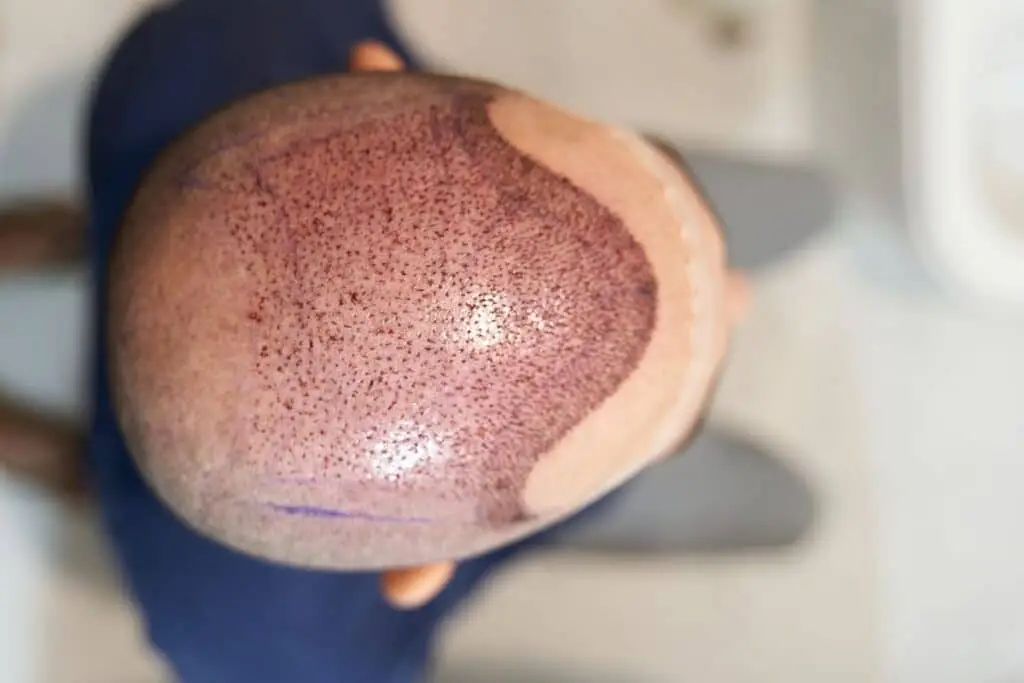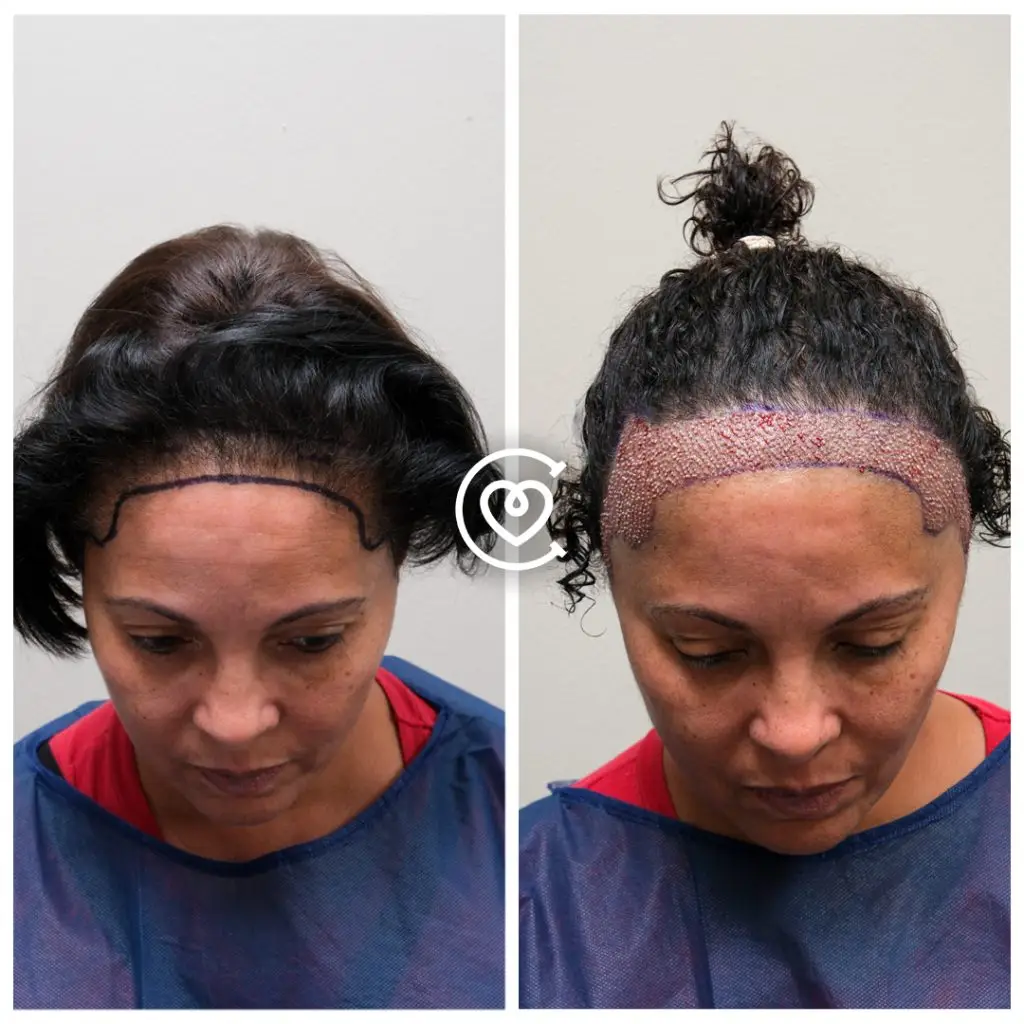A successful hair transplant can change your life. It restores your hair and boosts your confidence and self-esteem. This opens up new possibilities for you. However, not all hair transplants are successful. Understanding the reasons behind a potential hair transplant failure is not just important, it’s empowering. It equips you with the knowledge to take the necessary steps to avoid such an outcome, putting you in control of your journey.
This guide will help you understand why hair transplants can fail and give you tips on avoiding them. We will examine the signs of a failed hair transplant, discuss why it is important to choose the right surgeon, and explore the role of post-operative care. By actively engaging with this guide, you will be well-prepared with the knowledge needed for a successful hair transplant journey.
Understanding Hair Transplant Failure
A failed hair transplant occurs when the desired results are not achieved. This can mean poor hair growth, an unnatural appearance, or complete non-success.
The implications of a failed transplant can be significant. Beyond aesthetic concerns, it can lead to psychological distress. Confidence and self-esteem may suffer greatly.


Inadequate planning and poor surgical technique are common reasons for hair transplant failures. Choosing an inexperienced surgeon is a significant risk.
Several factors can undermine success, such as smoking or underlying health issues. Patients need to understand these risks.
Recognizing the symptoms of a failed transplant is crucial for early intervention. Look for signs like a lack of new hair growth or an unnatural hairline. Redness and significant scarring may also indicate problems.
Understanding these aspects and taking proactive steps can help prevent hair transplant failure and ensure better outcomes. Your informed choices and actions can make all the difference in your hair transplant journey.
- Definition and implications: Failed transplant results, psychological effects.
- Typical reasons: Poor planning, technique, or surgeon choice.
- Symptoms: Lack of growth, unnatural look, scarring.
Selecting the Right Hair Transplant Surgeon and Clinic
Choosing a qualified and experienced surgeon is crucial for a successful hair transplant. The right professional ensures the best chance for favorable outcomes. It minimizes the risk of a failed procedure.
Experience matters in hair restoration. Surgeons with many procedures under their belts often have better skills and are more equipped to handle unexpected challenges.
To verify a surgeon’s credentials, start by reviewing their certifications. Membership in reputable medical boards is an excellent indicator of credibility. Then, check their educational background and training specifics.
Consult online reviews and testimonials to gather patient insights. Real experiences can guide you in assessing the surgeon’s reputation. Don’t hesitate to ask for before-and-after photos of previous patients.
When choosing a provider, beware of certain red flags. Unclear pricing, lack of transparency, or pressure to sign up quickly are concerning. Similarly, facilities that lack proper hygiene standards should be avoided.
Not all clinics are created equal. Research is essential in picking the right one. Ensure they have modern equipment and technology to support successful outcomes.
By meticulously selecting your surgeon and clinic, you enhance your chances of a satisfying result. This decision is critical to avoiding hair transplant failure, so make sure it’s an informed choice.
- Verify credentials: Certifications, board memberships, and educational background.
- Research surgeon: Online reviews and patient testimonials.
- Red flags: Unclear pricing, pressure tactics, and poor hygiene.
Preparing for Hair Transplant Surgery
Your health plays a critical role in the success of a hair transplant. A healthy lifestyle can increase your chances of good results, so it is important to maintain good habits before the procedure.
Stay active, eat a balanced diet, and avoid smoking. Smoking can slow down healing and negatively impact the transplant. Limiting alcohol consumption is also advisable, as it affects the body’s ability to recover.
Pre-operative instructions are key. Your surgeon will provide guidelines to prepare your body for surgery. Following these instructions is essential to ensure readiness and decrease complications.
Consultations before surgery offer valuable insight into the process. Use this time to ask questions and understand what to expect. It’s a chance to align your goals with the surgeon’s approach.
Address any underlying medical conditions you may have. Conditions like diabetes or high blood pressure can affect surgical outcomes. Clear communication with your doctor is crucial to aligning treatment plans.
Preparation isn’t just physical; it’s mental, too. Approach the surgery informed and ready. Trust the process laid out by your medical team.
- Healthy habits: An active lifestyle, a balanced diet, and no smoking.
- Pre-op guidance: Follow the provided instructions for better outcomes.
- Medical transparency: Discuss conditions like diabetes or hypertension with your doctor.



Hair Transplant Techniques and Their Success Rates
Understanding the different techniques used in hair transplantation is vital. The primary methods are Follicular Unit Extraction (FUE) and Direct Hair Implant (DHI). Each method has unique advantages and considerations, so assessing which aligns best with your needs is essential.
FUE involves extracting hair follicles from the donor area and implanting them into the recipient area. This method is less invasive and often leaves minimal scarring. However, depending on the extent of hair loss, it may require a longer surgery time.
FUT, on the other hand, involves removing a strip of skin from the donor area. Hair follicles are then extracted from this strip and transplanted. While FUT can be more efficient in time, it may result in a linear scar.
A well-designed hairline is crucial for achieving a natural look. Your surgeon will work to create a hairline that complements your facial features. This artistic aspect is just as important as the technical skills involved.
Each case is unique, and a tailored approach can significantly improve success rates. Surgeons often adjust techniques based on a patient’s hair characteristics. Discussing these options thoroughly can help ensure the best outcomes for your situation.
- FUE: Individual follicle extraction, minimal scarring.
- Hairline design: Essential for a natural appearance.
- Tailoring: Custom methods based on hair characteristics.
Post-Operative Care and Maintenance
Proper post-operative care is crucial for the success of a hair transplant. Your efforts in the days and weeks following surgery will directly impact the final results. Adhering to your surgeon’s instructions is essential.
A comprehensive aftercare regimen starts with keeping the scalp clean and infection-free. Avoid touching or scratching the transplant area. Your surgeon will provide specific washing guidelines.
Monitoring for signs of infection is vital. Redness, swelling, or pus may indicate issues that require medical attention. Prompt action can prevent complications and safeguard your investment.
Nutrition and overall health play significant roles in hair transplant success. A balanced diet full of vitamins and minerals helps hair grow healthy. Staying hydrated is also important for skin elasticity and recovery.
Avoiding harmful substances like tobacco and alcohol can improve healing. These substances may impede blood flow and hinder the growth of new hair follicles. It’s advisable to abstain, especially during the initial recovery period.
Lifestyle adjustments can enhance your results and ensure longevity. Regular exercise, sufficient sleep, and stress management positively affect healing. Prioritizing health can lead to the best possible transplant outcome.
- Washing guidelines: Follow post-op washing instructions.
- Infection signs: Watch for redness and swelling.
- Balanced diet: Nutrition supports hair growth.
- Avoid substances: No tobacco or alcohol post-surgery.
- Healthy lifestyle: Exercise and stress management aid recovery.
Managing Expectations and Psychological Effects
Realistic expectations are critical to a satisfying hair transplant experience. It’s essential to have a clear understanding of potential outcomes. Not every hair transplant can fully restore hair as it was in youth.
Unrealistic expectations can lead to disappointment and stress. It’s crucial to discuss achievable results with your surgeon. This communication helps align your desires with the procedure’s possibilities.
Failed hair transplants can significantly impact one’s psychological well-being. Low self-esteem and frustration are common for those unhappy with results. Seeking support from professionals or peers can provide needed reassurance.
Patience is necessary as hair growth post-transplant is gradual. Initial changes may seem minimal, but progress unfolds over months. Understanding this timeline helps manage expectations and reduces anxiety about the outcome.
Corrective Measures and Additional Procedures
Corrective procedures may be necessary if a hair transplant does not meet expectations. These procedures can help address specific issues. Engaging an experienced surgeon is crucial for successful corrections.
Sometimes, additional procedures are needed to achieve optimal results. This might involve more hair grafts to enhance coverage or density. Discussing this with your surgeon will determine the best plan.
Non-surgical alternatives are also available for those seeking improvements. Treatments like platelet-rich plasma (PRP) therapy can help grow hair, and medications like minoxidil may also improve hair transplant results.
Before proceeding with any additional procedures, consider consulting with multiple specialists. A second opinion provides broader insights and confirms the suitability of potential solutions. Understanding all available options can help you make informed decisions.


Conclusion and Final Thoughts
Avoiding a failed hair transplant requires careful planning and informed decision-making. Choosing a skilled surgeon and adhering to pre- and post-operative care are vital steps. Understanding potential risks and managing expectations also play significant roles.
Continuous education on hair transplant advancements enhances your knowledge. It empowers you to make better decisions and stay informed about newer technologies. Regular consultations with qualified professionals ensure you receive personalized advice tailored to your needs.
Embark on your hair transplant journey with patience and clarity. Trust the process, and allow sufficient time for growth and healing. With realistic goals and a supportive medical team, achieving satisfying results is within reach.
To learn about our clinic and approach to Hair Transplant, visit our About Us page and for booking an appointment or specific details regarding our services, you can always contact us through the Contact Us page. We also invite you to explore our Reviews to hear from our satisfied patients about their transformative experiences.
